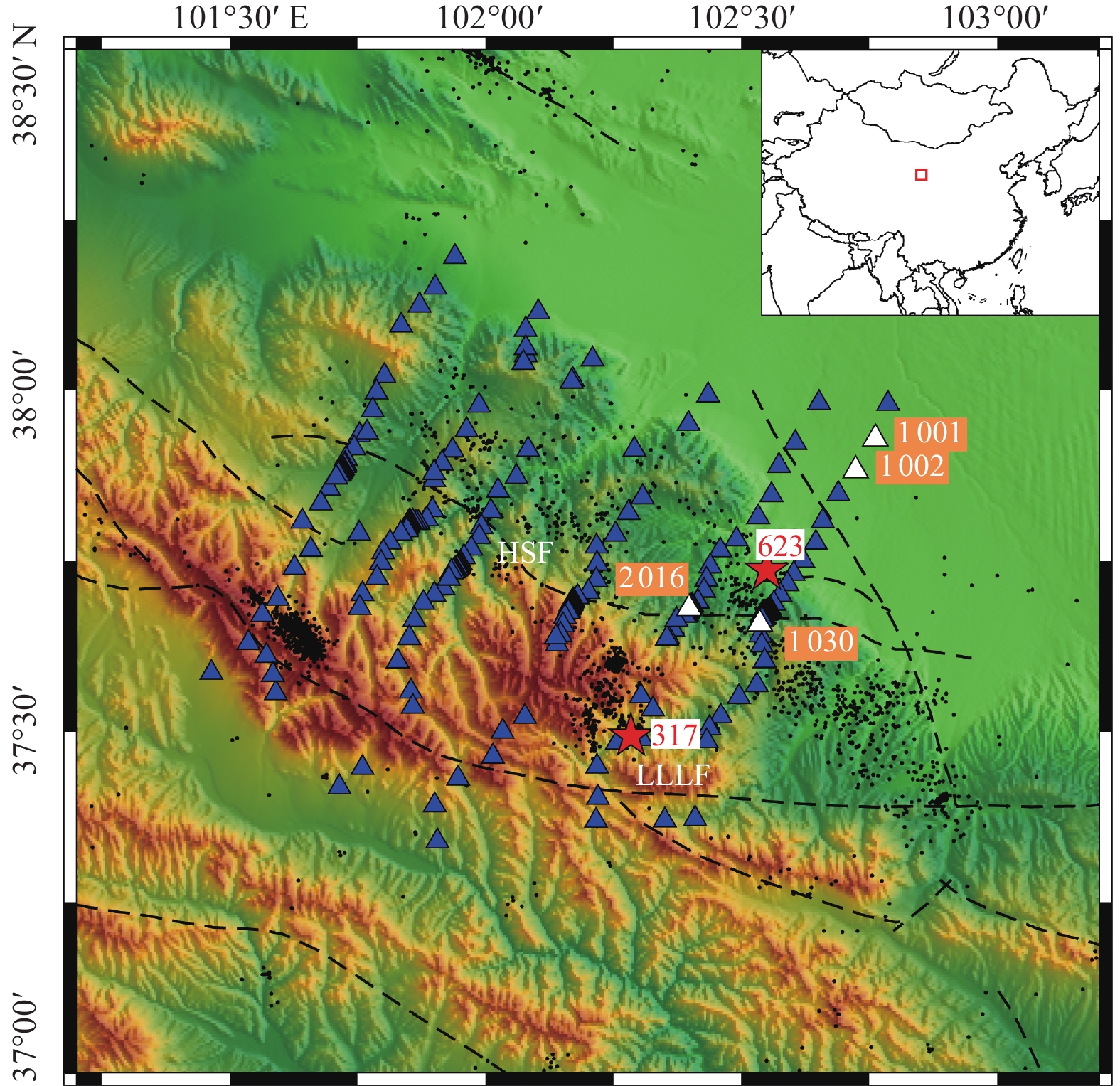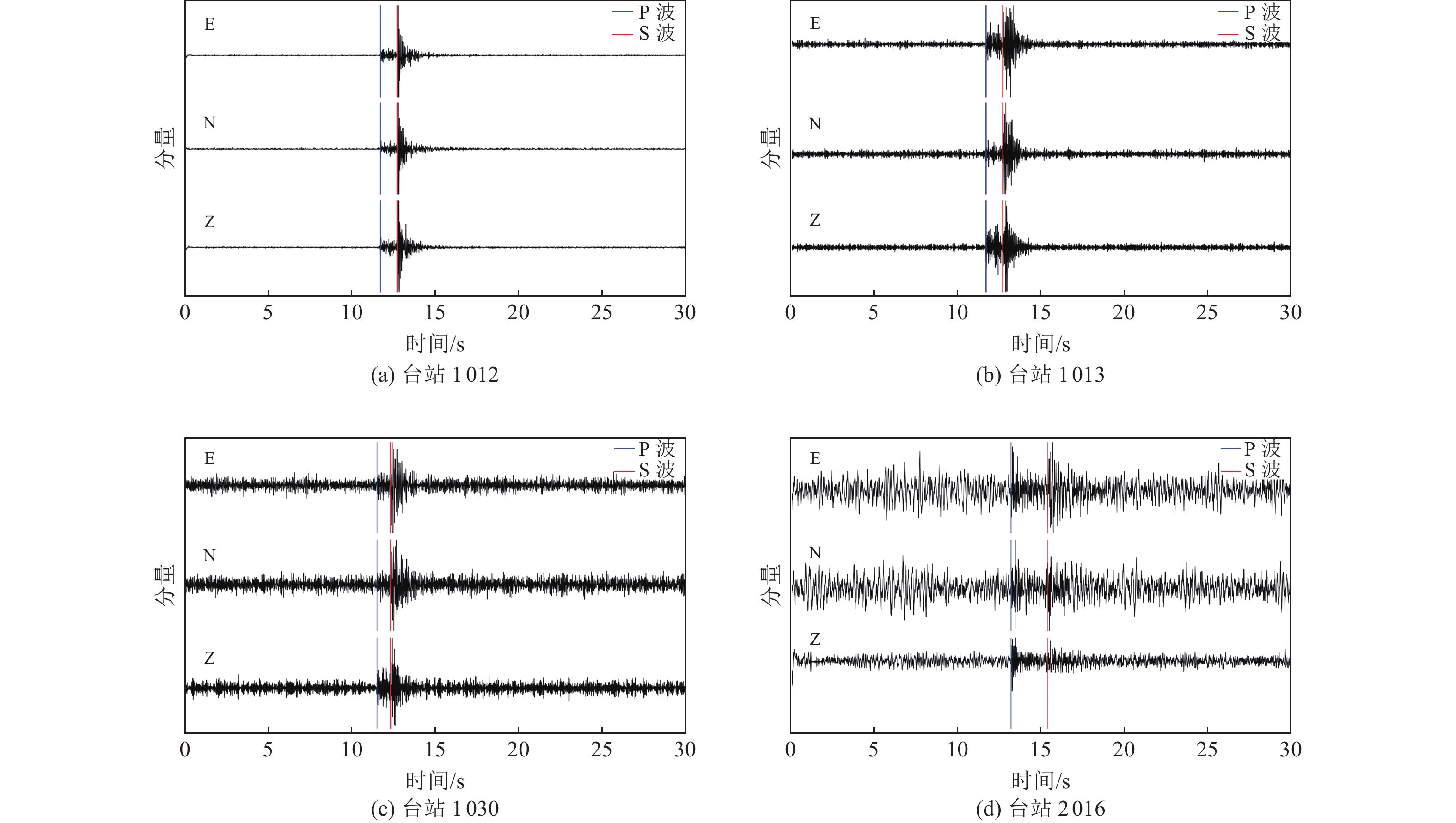| [1] |
郭鹏, 韩竹军, 安艳芬等, 2017. 冷龙岭断裂系活动性与2016年门源6.4级地震构造研究. 中国科学: 地球科学, 60(5): 929—942.Guo P., Han Z. J., An Y. F., et al., 2017. Activity of the Lenglongling fault system and seismotectonics of the 2016 MS 6.4 Menyuan earthquake. Science China Earth Sciences, 60(5): 929—942. (in Chinese)
|
| [2] |
郭鹏, 2019. 北祁连山冷龙岭断裂大震复发行为与危险性研究. 北京: 中国地震局地质研究所.Guo P., 2019. Earthquake recurrence behavior and seismic hazards of the Lenglongling Fault, northern Qilian Shan. Beijing: Institute of Geology, China Earthquake Administrator. (in Chinese)
|
| [3] |
侯康明, 1998. 皇城-双塔断裂带的几何分段及运动学特征. 华南地震, 18(3): 28—34Hou K. M. , 1998. The geometric segmentation and kinematics characteristics of Huangcheng-Shuangta fault zone. South China Journal of Seismology, 18(3): 28—34. (in Chinese)
|
| [4] |
戚帮申, 2014. 祁连山新生代构造地貌演化特征. 北京: 中国地质大学(北京).Qi B. S., 2014. Tectonic and geomorphological evolution features in Qilian Mountains during the Cenozoic. Beijing: China University of Geosciences Beijing. (in Chinese)
|
| [5] |
莘海亮, 2020. 中国大陆岩石圈地震体波三维走时速度成像与地震定位研究. 合肥: 中国科学技术大学.Xin H. L., 2020. Three-dimensional seismic travel time tomography of lithosphere of continental China and earthquake relocations. Hefei:University of Science and Technology of China. (in Chinese)
|
| [6] |
张培震, 沈正康, 王敏等, 2004. 青藏高原及周边现今构造变形的运动学. 地震地质, 26(3): 367—377 doi: 10.3969/j.issn.0253-4967.2004.03.002Zhang P. Z. , Shen Z. K. , Wang M. , et al. , 2004. Kinematics of present-day tectonic deformation of the Tibetan Plateau and its vicinities. Seismology and Geology, 26(3): 367—377. (in Chinese) doi: 10.3969/j.issn.0253-4967.2004.03.002
|
| [7] |
赵明, 陈石, 2021a. 基于深度学习的地震检测模型在区域台网的泛化性研究. 地震, 41(1): 166—179Zhao M. , Chen S. , 2021a. The Generalization ability research of deep learning algorithm in seismic phase detection of regional seismic network. Earthquake, 41(1): 166—179. (in Chinese)
|
| [8] |
赵明, 唐淋, 陈石等, 2021b. 基于深度学习到时拾取自动构建长宁地震前震目录. 地球物理学报, 64(1): 54—66Zhao M. , Tang L. , Chen S. , et al. , 2021b. Machine learning based automatic foreshock catalog building for the 2019 MS 6.0 Changning, Sichuan earthquake. Chinese Journal of Geophysics, 64(1): 54—66. (in Chinese)
|
| [9] |
Han S. C. , Zhang H. J. , Xin H. L. , et al. , 2022. USTClitho2.0: updated unified seismic tomography models for continental china lithosphere from joint inversion of body‐wave arrival times and surface‐wave dispersion data. Seismological Research Letters, 93(1): 201—215. doi: 10.1785/0220210122
|
| [10] |
Kissling E. , Ellsworth W. L. , Eberhart‐Phillips D. , et al. , 1994. Initial reference models in local earthquake tomography. Journal of Geophysical Research: Solid Earth, 99(B10): 19635—19646. doi: 10.1029/93JB03138
|
| [11] |
Li Z. F. , Peng Z. G. , Hollis D. , et al. , 2018. High-resolution seismic event detection using local similarity for Large-N arrays. Scientific Reports, 8(1): 1646. doi: 10.1038/s41598-018-19728-w
|
| [12] |
Liu M. , Zhang M. , Zhu W. Q. , et al. , 2020. Rapid characterization of the July 2019 Ridgecrest, California, earthquake sequence from raw seismic data using machine‐learning phase picker. Geophysical Research Letters, 47(4): e2019GL086189.
|
| [13] |
McBrearty I. W. , Delorey A. A. , Johnson P. A. , 2019. Pairwise association of seismic arrivals with convolutional neural networks. Seismological Research Letters, 90(2A): 503—509. doi: 10.1785/0220180326
|
| [14] |
Meng H. R. , Ben-Zion Y. , 2018. Detection of small earthquakes with dense array data: Example from the San Jacinto fault zone, southern California. Geophysical Journal International, 212(1): 442—457. doi: 10.1093/gji/ggx404
|
| [15] |
Mousavi S. M. , Ellsworth W. L. , Zhu W. Q. , et al. , 2020. Earthquake transformer—an attentive deep-learning model for simultaneous earthquake detection and phase picking. Nature Communications, 11(1): 3952. doi: 10.1038/s41467-020-17591-w
|
| [16] |
Perol T. , Gharbi M. , Denolle M. , 2018. Convolutional neural network for earthquake detection and location. Science Advances, 4(2): e1700578. doi: 10.1126/sciadv.1700578
|
| [17] |
Ross Z. E. , Meier M. A. , Hauksson E. , et al. , 2018. Generalized seismic phase detection with deep learning. Bulletin of the Seismological Society of America, 108(5A): 2894—2901. doi: 10.1785/0120180080
|
| [18] |
Ross Z. E. , Trugman D. T. , Hauksson E. , et al. , 2019a. Searching for hidden earthquakes in southern California. Science, 364(6442): 767—771. doi: 10.1126/science.aaw6888
|
| [19] |
Ross Z. E. , Yue Y. S. , Meier M. A. , et al. , 2019b. PhaseLink: a deep learning approach to seismic phase association. Journal of Geophysical Research: Solid Earth, 124(1): 856—869. doi: 10.1029/2018JB016674
|
| [20] |
Ross Z. E. , Cochran E. S. , Trugman D. T. , et al. , 2020. 3D fault architecture controls the dynamism of earthquake swarms. Science, 368(6497): 1357—1361. doi: 10.1126/science.abb0779
|
| [21] |
Waldhauser F. , Ellsworth W. L. , 2000. A double-difference earthquake location algorithm: method and application to the northern Hayward fault, California. Bulletin of the Seismological Society of America, 90(6): 1353—1368. doi: 10.1785/0120000006
|
| [22] |
Wang R. J. , Schmandt B. , Zhang M. , et al. , 2020. Injection‐induced earthquakes on complex fault zones of the Raton Basin illuminated by machine‐learning phase picker and dense nodal array. Geophysical Research Letters, 47(14): e2020GL088168.
|
| [23] |
Xiao Z. W. , Wang J. , Liu C. , et al. , 2021. Siamese earthquake transformer: a pair‐input deep‐learning model for earthquake detection and phase picking on a seismic array. Journal of Geophysical Research: Solid Earth, 126(5): e2020JB021444.
|
| [24] |
Yang S. B. , Hu J. , Zhang H. J. , et al. , 2021. Simultaneous earthquake detection on multiple stations via a convolutional neural network. Seismological Research Letters, 92(1): 246—260. doi: 10.1785/0220200137
|
| [25] |
Zhang M. , Ellsworth W. L. , Beroza G. C. , 2019. Rapid earthquake association and location. Seismological Research Letters, 90(6): 2276—2284. doi: 10.1785/0220190052
|
| [26] |
Zhu W. Q. , Beroza G. C. , 2019. PhaseNet: a deep-neural-network-based seismic arrival-time picking method. Geophysical Journal International, 216(1): 261—273.
|




 下载:
下载:








